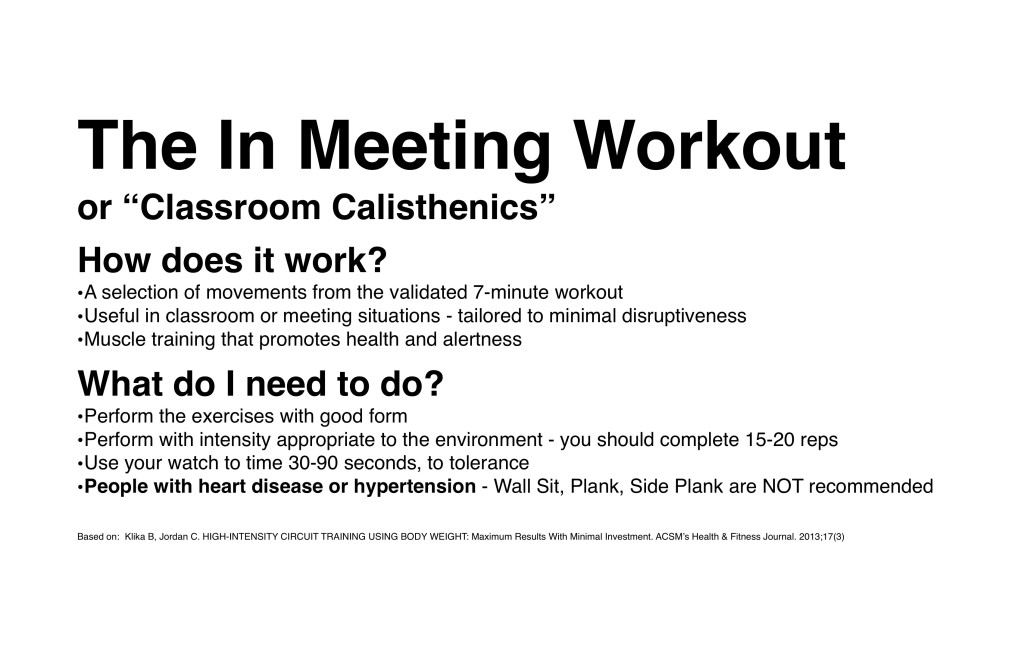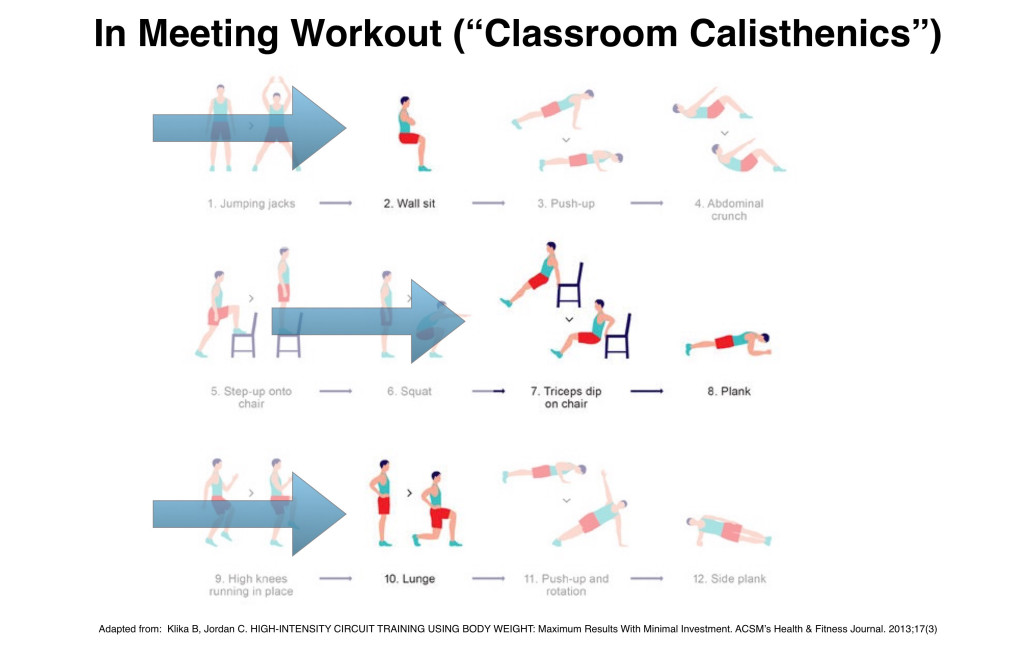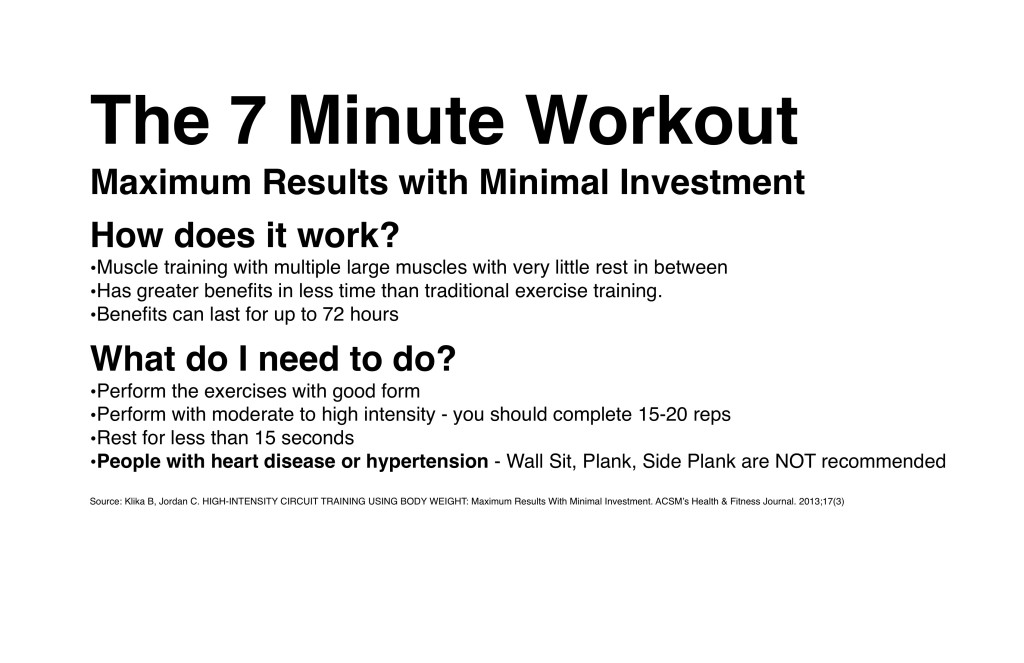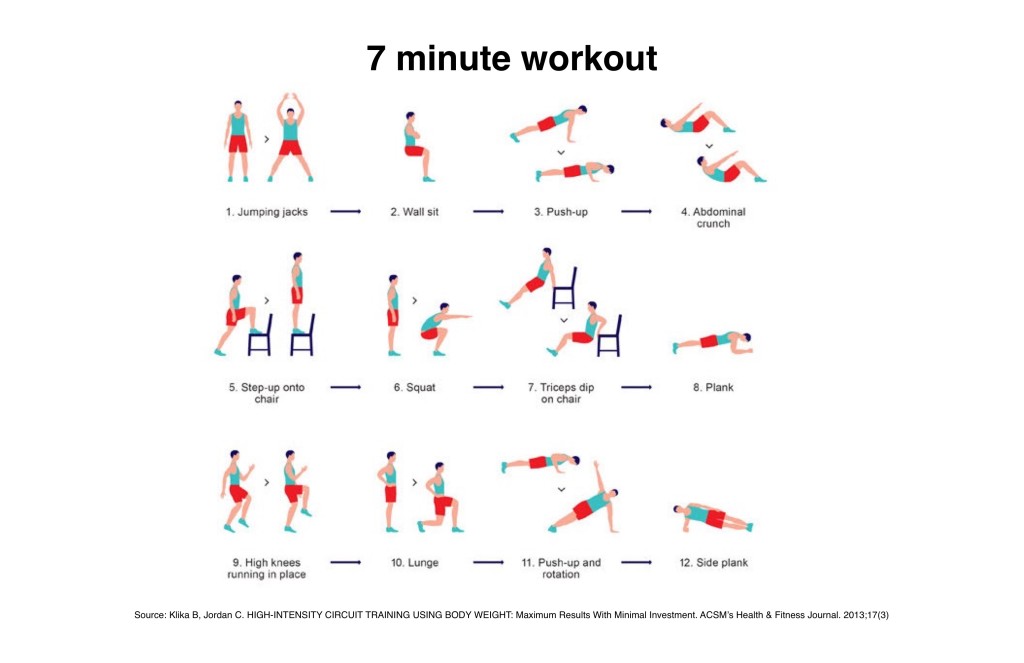Just in time for an event with the Professional Convention Management Association (@PCMAhq) at the Center for Total Health on healthy meetings…
It’s a problem acknowledged by everyone, and one that everyone involved can’t, won’t, or seems helpless to do anything about – sitting while learning (or in a large meeting where walking isn’t an option). This post is about taking back your health and improving your brain power in the classroom or meeting room.
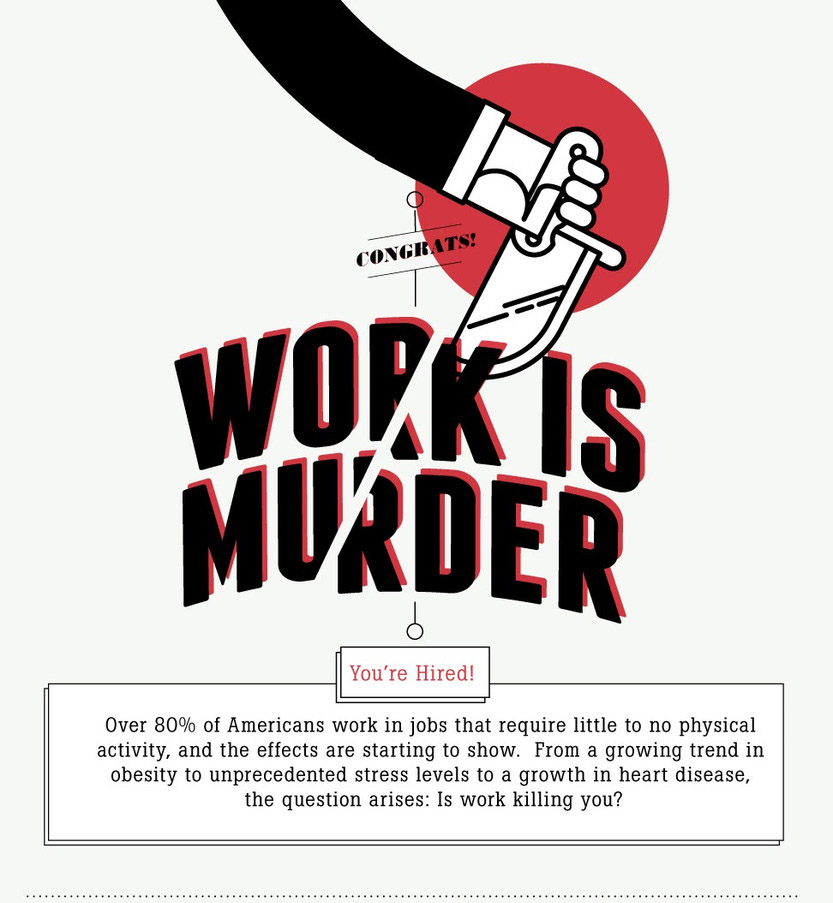
It’s not just work that can be a problem Source: Your Desk Job Makes You Fat, Sick and Dead [INFOGRAPHIC]
I needed to spend a lot of time in a classroom earlier this year (*cough* @HBSExecEd *cough*) in a relatively old-fashioned setting, of people sitting in rows, hours at a time, with, no question about it, extremely engaging content and professors. However, they, the professors, were the only ones that got to move.
More recently, I taught a class (at the beautiful University of Maryland, Shady Grove – see: Walking and talking about transgender women’s health: HLTH471 University of Maryland Shady Grove) and I saw the same picture from the vantage point of the teacher instead of the student. I asked the course lecturer, fellow innovator Sabrina Matoff-Stepp, PhD (@SabrinaMatoffSt) if I could do a 30 second demonstration of this concept and her answer was, “sure!”

Putting the two experiences together makes me feel that we’re all actors in a play performing a script that we didn’t write. Who decided that the optimal position for learning was one that shuts your entire body off? Not us.
In Class Calisthenics
I based these on the 7 minute workout, which began to receive attention in 2013, and has a good scientific basis for its effectiveness.
What I’ve done, is chosen the exercises from this workout that are possible using your body weight, without additional furniture (mostly), and least likely to disrupt the learners around you.
If my experience holds true in other settings, it’s possible that the learners around you will join in. There’s nothing wrong with that.
A few things to note
- Unlike the 7 minute workout, the goal here is not to perform at the highest intensity possible. This is a classroom.
- As with the 7 minute workout, the isometric exercises (wall sit, plank) should not be performed if you have heart disease or high blood pressure. Remember, this is for health.
- The exercises chosen are ones that are the most likely to keep you engaged in the material – they allow you to maintain eye contact, complete short bursts, and return to your seat. This is not to say you can’t do jumping jacks in the back of the room, base your decisions on the environment around you.
- Think about doing each one for about 60 seconds or to tolerance. That’s all it takes. You don’t have to do them in any particular order (see bullet point about this not being scientific), however, if you have the chance to alternate upper body and lower body, go for it.
- Take advantage of 5-10 minute breaks. That’s your time, so you can do the squats, planks, pushups, tricep dips by yourself, or invite others to do them with you.
- Since you’re not doing an actual high intensity, minimal rest workout, the scientific evidence related to 7-minute workout doesn’t apply here. However, there’s also no scientific evidence that sitting for 8 hours is better for learning, so that lack of evidence doesn’t apply here, either 🙂 .
My Experience

When you sit anywhere, including in a classroom … Source: Your Desk Job Makes You Fat, Sick and Dead [INFOGRAPHIC]
Necessity was the parent of invention, so I did perform many of these when I was in my in-class situation. And what happened was pretty remarkable – I was able to maintain alertness, stay engaged, and emerge from the learning situation without guilt that I had sacrificed one part of my body for another. One 60 second wall sit brought me right back from the ledge of inattention.
At the classroom situation I was in (*cough* @HBSExecEd *cough*) just outside the door was a table full of unhealthy snacks (why?). Feed your muscles and your mind instead of your stomach. Neurochemicals up, calories down.
When I approached one of my professors to ask a question the next day, they said, “Oh, you’re the guy in the back.” I asked, “Is that okay?” and they said, “It’s fine.” Phew.
And then some more health ensued – people actually joined me.
Again, I ask, who decided that the best way to learn involves shutting off your entire body? Not us.
The 7 minute workout
This is the paper that describes the 7 minute workout and gives credit to the authors for its publication. When you’re not in class, I recommend doing one of these before, and maybe one of them after. 7 minutes. Tons of apps on the app store of your choice that will walk you through them. Or post something in your break room or other conspicuous place.
Klika B, Jordan C. HIGH-INTENSITY CIRCUIT TRAINING USING BODY WEIGHT: Maximum Results With Minimal Investment. ACSMs. Health Fit. J. 2013;17(3). Available at: http://journals.lww.com/acsm-healthfitness/Fulltext/2013/05000/HIGH_INTENSITY_CIRCUIT_TRAINING_USING_BODY_WEIGHT_.5.aspx.
Conclusion
Just like we are challenging the ideas about what “work” is supposed to be, let’s challenge the ideas about what “learning” is supposed to be. Same goes for the sit down meeting. Sometimes they can’t be converted to walking meetings for various reasons (but always challenge that notion first).
If you’re an educator or student, try some of these out, let me know how they go either in the comments or via twitter. Same goes for the meeting planners out there. Allow your colleagues, guests, and interested collaborators to be alert, engaged, and healthy. It’s completely possible.
